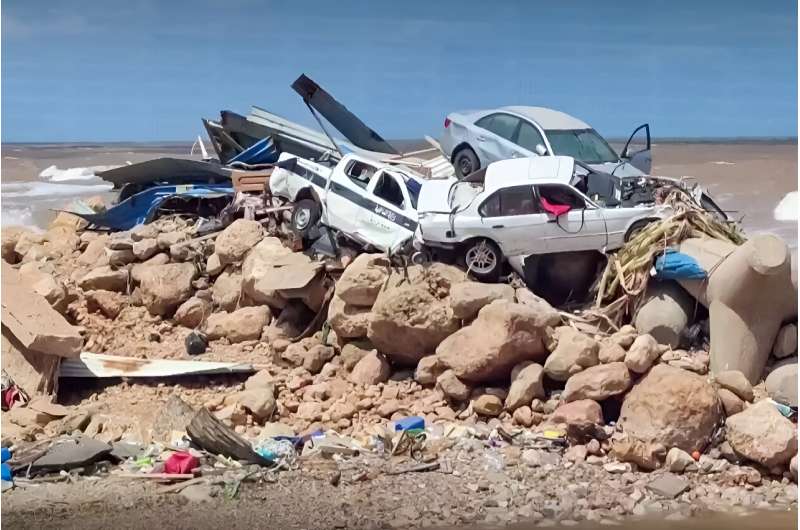
The flash flood that has killed thousands of people in Libya this week followed a “medicane”, a rare but destructive weather phenomenon that scientists believe will intensify in a warming world.
The term is an amalgamation of the words Mediterranean and hurricane. Used by scientists and weather forecasters, it is less well known to the wider public.
Medicanes, which tend to form over parts of the Mediterranean Sea near the North African coast, are similar to hurricanes and typhoons although they can develop over cooler waters.
We are confident that climate change is supercharging the rainfall associated with such storms,” said University of Reading professor Liz Stephens.
The Mediterranean cyclones are usually smaller and weaker than their tropical equivalents and have a smaller space in which to develop.
Their peak strength is usually the equivalent of a Category 1 hurricane on the Saffir-Simpson scale, encompassing speeds of 119-153 kilometers (74-95 miles) per hour.
Medicanes tend to form in the autumn when the sea is warm, usually in the western Mediterranean and the region between the Ionian Sea and the North African coast, explained Suzanne Gray, a professor at the University of Reading’s meteorology department.
While scientists are increasingly able to unpick the likely effect of climate change on the probability of an extreme weather event happening and its intensity, no such attribution study has yet been carried out on Daniel.
In general, experts say the warming of sea surface temperatures, driven by human-induced climate change, is going to make extreme storms more intense.
Oceans have absorbed 90 percent of the excess heat produced by human activity since the dawn of the industrial age, according to scientists.
Spanish researchers said the Mediterranean reached its highest temperature on record in July as Europe baked under a series of heat waves.
The surface waters of the eastern Mediterranean and Atlantic are two to three degrees Celsius warmer than usual, which would have turbocharged Daniel.
“The fact that Daniel could form into a medicane… is likely a result of warmer sea surface temperatures and hence man-made climate change,” added climate scientist Karsten Haustein of Leipzig University in Germany.